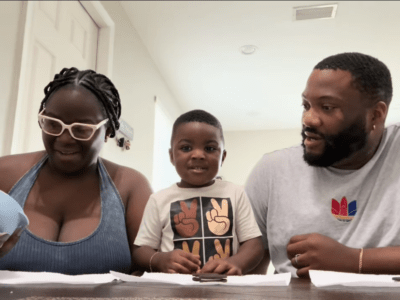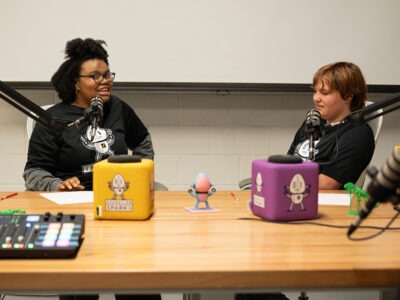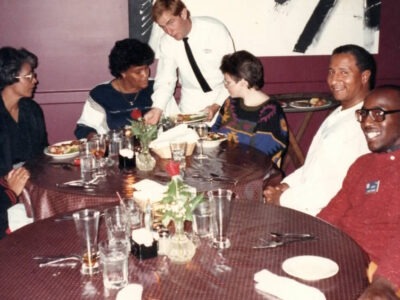This content was originally posted on Spotlight on Poverty and Opportunity and is cross-posted with full permission.
The challenges that the state of Mississippi and the city of Jackson face can be daunting – historic poverty, a crumbling infrastructure, a political battle to implement Medicaid expansion and a fraying network of smalltown newsrooms trying to provide information and accountability. Few institutions play a bigger role across all those issues than the Community Foundation for Mississippi. Jane Alexander, the foundation’s CEO and president since 2012, spoke with Spotlight recently about the progress the state is making. The transcript of that conversation has been lightly edited for length and clarity.
I know the Community Foundation does a lot of different things, but we specifically wanted to talk about the work that you’re doing in partnership with the Kellogg Foundation.
Sure. We do have specific programmatic grants from the Kellogg Foundation to try to achieve some outcomes with them as a partner. Most of those for the past few years have focused around transforming Jackson Public Schools, but that’s not the only thing we’re doing with them. We also have a health initiative with Mother’s Milk Bank of Mississippi, which just created a frozen breast milk bank to share with babies in the NICU at University Medical Center. We’re also doing a project with the Barksdale Reading Institute around early literacy.
I thought the Barksdale Institute was sunsetting. Is it still open?
It’s still open. They sunset June 30, so we’ve been winding up that work and trying to figure out the next step. We’re hoping that that’s going to translate into a brick-and-mortar space for a reading clinic that would kind of serve as a lab or model for other communities that wanted to set up this sort of thing based on Barksdale’s knowledge and training. So that rather than it being something that’s happening in school districts, one by one, it could actually be something that serves communities.
We also have a separate body of work with the Kellogg Foundation that’s trying to support local journalism and that’s been a very moving target in the city of Jackson. They came in as a part of a cohort that we were also doing with Microsoft and so it’s been very interesting to see what we’ve learned from public perception of journalism in general, and what are some ways to try to strengthen that in a place that still has a daily paper that sucks all the oxygen out of the room, but which has seen massive staff cuts.
Spotlight also has been working with the Kellogg Foundation to create a consortium of newsrooms in the state to share coverage of poverty and opportunity issues.
Jackson’s needs have changed so drastically over the last two years in terms of journalism. For outlets like Mississippi Today, Mississippi Free Press and even the Jackson Advocate to some degree, their coverage pretty much has to be more statewide. And with our water crisis – and now the garbage crisis – people get Jackson fatigue. I get Jackson fatigue and I live here. For coverage of what’s happening in Jackson, you still don’t really have somebody who understands the relationships and the story behind the story behind the story, that if you lived here all your life and had done all your work, you would have some contacts to be able to answer, what’s really going on here? People in Jackson also need help finding the information they need to simply function.
We’re very interested in what we are seeing in some of the research that we’re doing with Red Window out of Oxford [Mississippi] on something called constructive journalism, which is a model that’s used more in Europe than in the U.S. There’s a community in Scotland, for example, that started its own neighborhood newsletter; they did it in a print format because they’re a highly impoverished area and everyone doesn’t have access to the internet. That’s grown into a regular publication that is really integral to the community now. They have a couple of paid staff people, but mostly it’s volunteers from the community who are writing, and they have workshops for kids to learn how to write stories. And it’s just a very organic way for people to find out what’s really going on in their towns. And I think that’s we see as having some potential, especially in our rural areas. What our research is really showing us is, especially when you’re dealing with impoverished communities, is that the coverage doesn’t need to just be local, it needs to be hyperlocal.
When we began, you mentioned the work you’re doing with Jackson Public Schools. I know that’s something that the Kellogg Foundation has been committed to for a long time. What’s the latest manifestation of that?
When we began that work, the Better Together Commission was formed to try to listen to the community and get feedback about what the community needed from the public school system and also take a deep dive into both the academic structure and then the financial structure. We did a second grant with them to create a strategic plan on how to implement those changes. And then we did a third grant to start the implementation phase.
Because of COVID, we had to reorder one whole set of deliverables to get to online instruction a lot faster, but one of the beautiful things about working with the Kellogg Foundation is that they are willing to pivot when circumstances demand it. They found some money to try to deal with the lack of broadband access – we put in Wi-Fi towers, we got schools connected, and we got teachers trained on how to pivot to online learning.
Now, we’re working very intentionally on creating what we used to call magnet schools – academy-type models, a couple of which will have one track that’s IB (International Baccalaureate). There’s also a school that will award graduates a two-year degree from Tougaloo College as well as free tuition for two more years if they finish their four-year degree. They’ve also just announced a new partnership with Jackson State called Grow Your Own, which is a full, four-year ride to Jackson State for math teachers if they’ll stay in Jackson Public Schools and teach. This is so different from the Jackson Public Schools that I knew in even 2012 – it’s radically different in the way that they’re approaching serving these students. And as a result, the overall grade level went from failing to an average of C but we also vastly improved the number of A schools, especially at the elementary level. So, hopefully in the next year, we really know what post-COVID school looks like.
We’ve used a data democratization platform called My Sidewalk to create maps of broadband coverage, giving us an overlay by zip code to help us put these Wifi towers in locations where they can do the most good. Even when we felt that we’d gotten to devices to most of the students who need them, that doesn’t really help mom and dad, who can’t access a student network.
One other thing I would note – and this was CARES Act money rather than Kellogg Foundation funding – was how much we have learned through reimbursing nonprofits for some of their COVID-related expenses. We thought we understood where we lived, and we thought we understood what the capacity problem looks like and what the poverty problem looks like. And we learned so much with the COVID reimbursement grants that it’s kind of led all of us to make a commitment to more capacity building on a very small level. Not huge things, but ways to make nonprofits incrementally better – being able to create a balance sheet, for example. We also found what nonprofits in the state were actually active and that’s given us a much better sense of overall resources. You can’t just go off the data – you have to dig deeper and realize what the scale problems are.









Comments